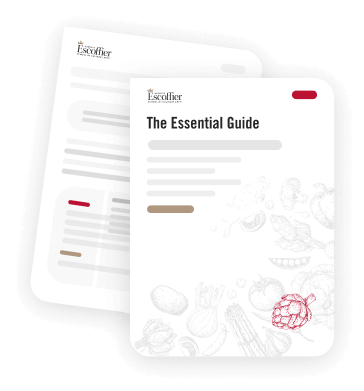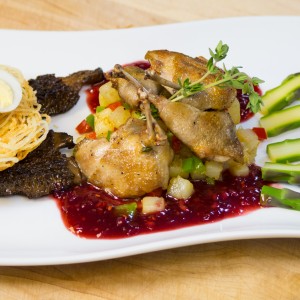Preparar Codorniz

El pequeño pájaro conocido como la codorniz se ha utilizado en las artes culinarias de todo el mundo durante cientos de años. Más pequeño que un pollo pero más grande que una perdiz, la codorniz ha sido un elemento básico de la cocina India, Francésa, Polaca, Portuguésa y Japonésa por su sabor único y textura suculenta. A menudo cocinado junto con las verduras o en una salsa, esta ave puede parecer algo lujoso, pero es en realidad una forma económica para cambiar sus platos mientras trayendo un poco de deliciosa diversión a la hora de cenar. Puedes rellenar, estofar, envolverlos en tocino o cocinar a fuego lento en una salsa sabrosa durante horas.
Siga junto con nuestro chef de la escuela culinaria por Internet como él te muestra cómo preparar codorniz. Con cientos de recetas únicas, vas a querer aprender esto!
Preparing Quail
Ingredients
2 semi-boneless quail
2 tbsp olive oil
2 sprigs of fresh thyme
2 tbsp unsalted butter
1 shallot, minced
¼ cup port
¼ cup white wine
2 tbsp seedless raspberry preserves
1 tbsp raspberry vinegar
1 tbsp Dijon mustard
1/2 cup raspberries
Salt and pepper
Wild mushrooms, optional
Quail Preparation
1. Heat a medium sautéed pan over high heat. Season the quail with salt and pepper and add the oil to the pan, place the quail in the pan skin side down first. Add thyme sprigs, cook the quail without moving them, for about 3-4 minutes, then carefully flip the quail and baste with the oil. Add the mushrooms and cook for 3 minutes. Cook the second side for additional 3 minutes or until the quail is firm and tender.
Sauce Preparation
1. Melt 1 tablespoon of butter in a medium sauce pan. Add the shallots and cook over medium heat, stirring frequently, until softened, about 2 minutes. Add the port and white wine and cook over medium heat until the sauce reduces to 3 tablespoons, about 5 minutes. Add the raspberry preserves, vinegar and mustard whisk over low heat until smooth. Add the raspberries and cook whisking gently to break up the berries. Whisk the remaining 1 tablespoon of butter, season with salt and pepper.
2. Served the quail with the raspberry sauce with your choice of starch and vegetable.


